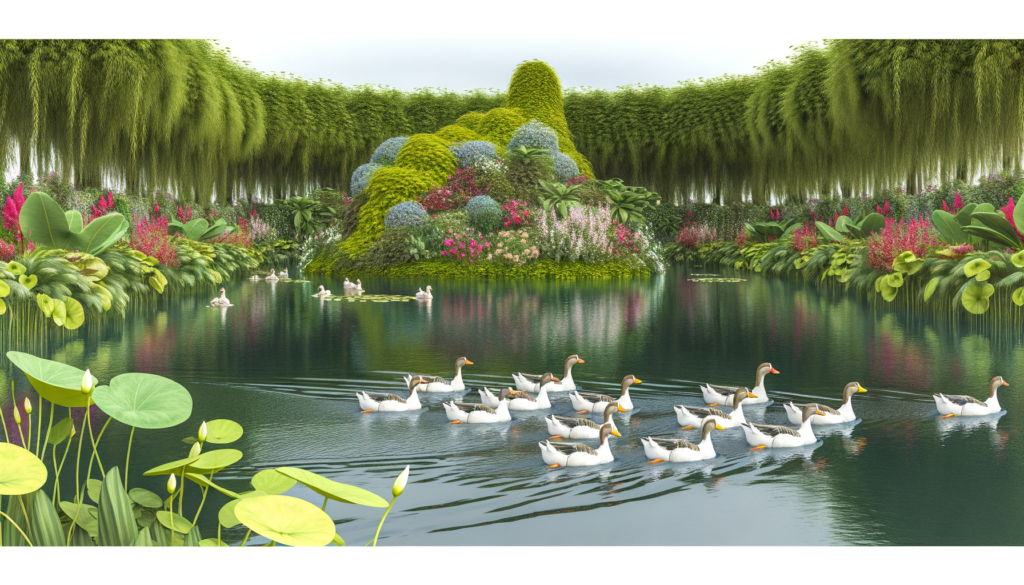Introduction
The landscape of California is dotted with natural wonders, one of which is a historic lake with a rich and vibrant history. However, in recent times, this once-thriving ecosystem has become perilous for wildlife, particularly migratory birds. Investigating the causes, implications, and possible solutions, we dive into the phenomenon that has transformed this ancient lake into what many now refer to as a “death trap” for birds.
The Significance of California’s Ancient Lakes
California has long been home to a number of ancient lakes, reservoirs of both biodiversity and water. These lakes have acted as critical stopover points for migratory birds traveling along the Pacific Flyway. The health of these lakes is directly tied to the well-being of countless bird species, making their preservation essential.
The Lake’s Ecological Role
- Biodiverse Habitat: Serving as a habitat for fish, amphibians, and numerous bird species.
- Migration Haven: Offering essential rest and nourishment for birds on their long migratory journeys.
- Water Supply: Primarily in the past, providing vital water resources for surrounding ecosystems and human settlements.
The Transformation: From Sanctuary to ‘Death Trap’
What Led to This Transformation?
The shift from thriving ecosystem to hazardous environment stemmed from a variety of factors, both natural and man-made. The most immediate concern is the drastic reduction in water levels, compounded by environmental changes and human interference.
Environmental Changes
- Climate Change: Increasing temperatures leading to evaporation and reduced water inflow.
- Droughts: Prolonged periods of drought depleting water resources faster than they can be replenished.
Human Impact
- Water Diversion: Redirecting water for agricultural and urban use has significantly reduced the lake’s volume.
- Industrial Activity: Pollution and land development on and around the lake further deteriorate its condition.
The Devastating Impact on Birds
The perilous state of the lake has dire consequences for birds, particularly during migration seasons. What once was a sanctuary now poses lethal threats.
Increased Mortality Rates
- Dehydration: Birds arriving at the lake expecting a replenishing stopover instead find dry basins.
- Lack of Food: A reduced aquatic life population owing to lower water levels provides less nourishment for birds.
Health Hazards
Besides food and water scarcity, the quality of the environment has worsened, exposing birds to potential health risks.
- Contaminated Water: Stagnant and polluted water may harbor diseases harmful to bird populations.
- Habitat Loss: The shrinking lake means birds are forced to compete for dwindling resources, increasing stress and vulnerability to predators.
Efforts and Solutions: Turning the Tide
Restoration Initiatives
To combat this environmental crisis, several initiatives and strategies are being proposed and implemented. These aim not just to revitalize the lake but also to secure the future of migratory birds and the broader ecosystem.
Conservation Programs
- Water Management: Implementing policies to balance water usage between human activities and natural reserves.
- Habitat Restoration: Planting native vegetation and creating artificial wetlands to provide additional support for migrating birds.
Policy and Public Awareness
- Legislation: Enforcing stricter regulations regarding industrial pollution and water diversion.
- Education Campaigns: Raising public awareness about the critical state of the lake and how collective efforts can make a difference.
Looking to the Future
The plight of California’s ancient lake serves as a stark reminder of the delicate balance between nature and mankind. Addressing these challenges requires not only local but global cooperation and commitment. With focused conservation efforts, improved policies, and active engagement from communities, there is hope that this once-crucial haven for birds can be revitalized.
Conclusion
The story of this ancient lake reflects broader environmental issues facing ecosystems worldwide. As the planet grapples with climate change and overexploitation of natural resources, the urgency to act grows ever more pressing. By harnessing scientific insights, community-driven action, and sustainable practices, we can work to preserve these natural habitats. In doing so, we ensure that future generations of migratory birds can continue their age-old journeys undisturbed, and that the rich biodiversity of our planet endures.

Erzsebet Frey (Eli Frey) is an ecologist and online entrepreneur with a Master of Science in Ecology from the University of Belgrade. Originally from Serbia, she has lived in Sri Lanka since 2017. Eli has worked internationally in countries like Oman, Brazil, Germany, and Sri Lanka. In 2018, she expanded into SEO and blogging, completing courses from UC Davis and Edinburgh. Eli has founded multiple websites focused on biology, ecology, environmental science, sustainable and simple living, and outdoor activities. She enjoys creating nature and simple living videos on YouTube and participates in speleology, diving, and hiking.

